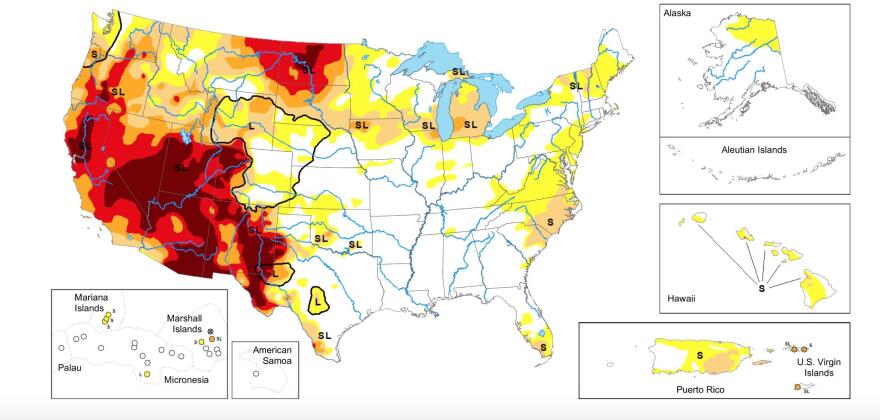Even with recent rains across the region, scientists say expanses across the Midwest and High Plains remain in a long-haul drought.
The U.S. Drought Monitor says conditions in parts of the Midwest range from abnormally dry to severe drought. The High Plains fare worse, with pockets of exceptional drought.
Recent rains can’t make up for soils that have been parched so thoroughly and for so long, said Adam Hartman, a meteorologist with the National Weather Service’s Climate Prediction Center and one of the authors of the May 27 drought monitor map.
“When you have heavy rainfall in a very short period of time, it doesn’t allow the soils enough time to absorb that moisture,” Hartman said. “Instead, you actually get more runoff than absorption.”
Large parts of north-central North Dakota and western Colorado are experiencing the worst drought conditions — categorized as exceptional drought. Meanwhile, pockets of northwest Iowa, northeast Illinois and western Michigan are in severe drought.
Even with the May rains, there just isn’t enough moisture in the soil for plants to thrive, said Dennis Todey, the director of the U.S. Department of Agriculture’s Midwest Climate Hub.
“We are at greater risk of having problems with crops and other plants as the season goes along because there’s not as much moisture available for the crops to be able to grow,” he said.
Todey said long-term drought could also create problems for water quality. In Iowa, the amount of water flowing in the Raccoon River is about 25% of normal.
At Des Moines Water Works, Iowa’s largest water utility, CEO Ted Corrigan said he’s keeping a close eye on the situation.
“We’re not suffering any impacts right now,” Corrigan said. “The recent rains have helped us manage our demand so that it’s about typical for this time of year and we’re easily able to meet that demand now.”
The drought started last summer. The Climate Prediction Center’s Adam Hartman said it’s hard to say how long it will continue. Summertime brings localized thunderstorms and those are harder to forecast.





